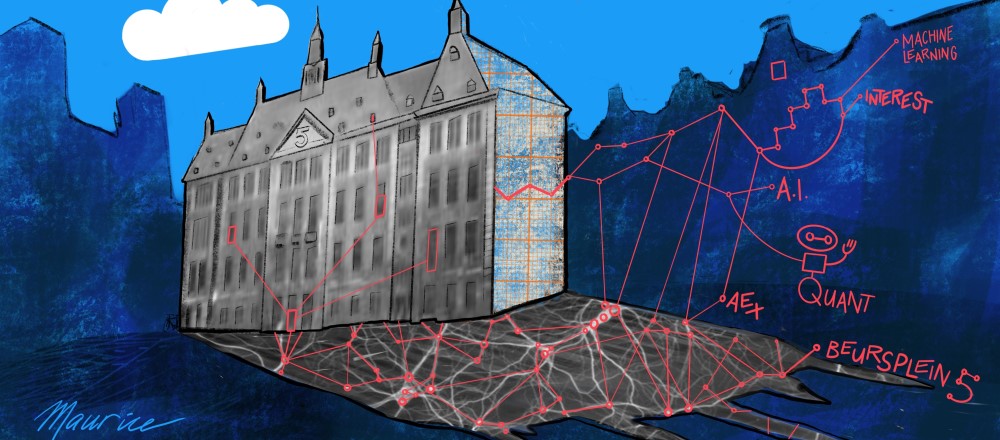 |
| Je Plaiderais Ma Cause |
I also observed other artists/viewers taking several approaches:
- some will not even give a title to allow the viewer to completely discover his/her interpretation
- some explain a lot, provide detailed descriptions
- also sometimes you find critics that give a very detailed interpretation, about 'what the artist intended to do/say'
I went back to what I would like to achieve for my art, and how it would be viewed:
1. Understanding the context
The viewer should be able to understand the context of an art work.
Too many times I hear from many people that they have no clue about what modern art is, what it intends to do/bring, why abstraction can be a better way to express oneself than realism, why the artist might not go for very áccessible' art.
2. Freedom to interpret
I have observed that when people see art they have a direct preference; they can tell whether a specific artwork 'touches'them, or has a certain impact. It is important to allow people to make their own story with an art work. It helps them more appreciate the artwork, helps to further explore and keep seeing new aspects of the artwork.
Also I have seen cases where providing too much detail can be limiting:
We had an exhibition in our gallery where objects were exhibited of an artist that is very much into psycho analysis. We had one viewer being fascinated by a box; it was light, small, had a square opening in the cover and certain patterns. It was clear that he was exploring and approached us to buy. Then the artist joined. The man said he liked the shape and the carvings.
The artist said: "these are patterns of auto mutilation..."
The man put the object down and 'ran'out of the door.
For em that was an example where the artist limited the viewer to find the beauty in the art work and discover/explore its many dimensions.
3. The artist view is limited too
An artist, when working and expressing during his/her art largely relies on his/her feeling. The artist has developed normally a good level of skills; and the tools become part if his senses. While working preferences and state of mind will influence the artwork. Patterns, shapes and colors are chosen often in a highly intense process. The result is a complex work of art that contains expressions of the subconscious. This implies that some deeper elements of the art work are also hidden to the artist.
I have had cases where experienced viewers identified patterns that I had not (yet) discovered. Elements of suppressed pain, frustration and passion might appear without the artist actively injecting it in the art work.
So, from this it is easy to understand what not to do...but more difficult it is to find a way to actually provide sufficient context, but allow the viewer freedom to interpret.
I have chosen the following guidelines, but always p[en for better suggestions still:
A. I explain the concept, but never the art work
Every series of paintings is part of a concept; an experiment where I transform ideas, analysis and reflection into a new approach. Explaining the intention of the concept helps people to understand the art works, and helps to appreciate the materials, colors and patterns. And I never explain an art work, even when people ask. Sometimes I explain elements of what I see, or what others have seen, but always leave space for the viewer to have his/her own interpretation.
B. A title that is 'open'
Nowadays I take time to select and create the titles. Often they are taken from literature or books with a deeper meaning. I make sure that the title strikes the right tone and touches on the patterns and themes that are in the painting. Also it will often refer to the concept itself, and the intentions I have with the concept.
Feedback
I am not saying I found the perfect solution here, and it could be that other people can help me refine my ideas. And I still have moments where people insist that I explain the details of a painting. And then I give them the explanation as described in this article.
But I did see several artists struggle with this topic. And most feedback I recieve is actually positive. Many people approach me after reading the concepts on my main site where I also explain the concepts. They like that I explain more about the context, and in several cases they have told me it was the first time that they have understood what modern art could be about.
The artwork in this article is the one I finished this week. It is from the Subconscious Power concept and has the title 'Je Plaiderais Ma Cause', which means 'I would plead my cause'... I leave you the space to look up the concept and explore what you see....
And of course I would be happy to have your view.

No comments:
Post a Comment